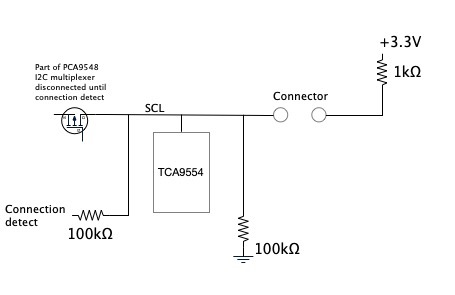I am looking at an application where we use the SCL to detect connection of the other part of the system.
To do this we have a 100k pull down on the SCL and a 1k pull up in the attached part. So when this is attached the SCL is pulled high and operations can start. The level of the SCL is detected by a different circuit.
I find that when the tca9554 is also on the bus, SCL is low at power on but once the line has been in a high state, the 100k can not pull it down.
The datasheet only states the input current as ±1µA, so this can not account for the problem.
When the tca9554 is removed, the problem is not present and the line can be pulled down.
Changing the 100k to 20k solves the issue for this batch but I need to know what is the resistor value I should use to be certain to pull down the SCL for all tolerances of the tca9554.


